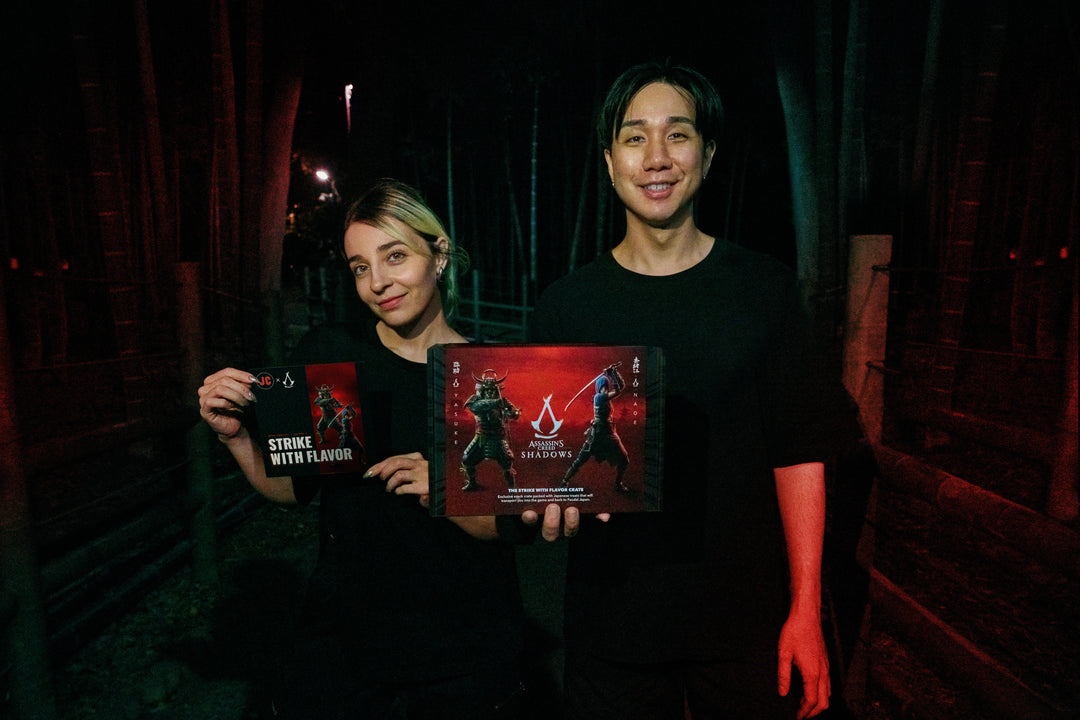A Guide to Japanese Yakitori Street Food
There are many delectable foods in Japan, but Japanese street cuisine is particularly tasty. Although it is uncommon to see Japanese people eating on the side of the road in Tokyo or Osaka, there are a few street food options you can anticipate. With so many festivals lighting up Japan's streets every year, food vendors emerge from the shadows to share the delicious joy of their prized street food at their roadside shops. Since the early 20th century, these foods have left a tradition of being both inexpensive and delectable. There are countless delicious recipes that are reasonably priced without sacrificing flavor that you must try, and yakitori, a traditional finger meal consisting of grilled chicken skewers, is no exception. Read on and discover all you need to know about Yakitori.
What is Yakitori?

One of Japan's most well-known street snacks is yakitori, simply grilled chicken on bamboo skewers. Yakitori is derived from the Japanese terms yaki (grill) and tori (chicken), which literally means grilled chicken. All chicken pieces, including the chicken tail meat, neck, chicken cartilage, chicken fat, chicken thigh, chicken skin, chicken breast, chicken wings, chicken heart, and chicken liver, are used in grilled yakitori, which is a common dish in Japan. Each part of the chicken has a distinct flavor. It is typically prepared to order and cooked over charcoal. Additionally, in Japan, a specialty yakitori restaurant known as yakitori-ya serves the best yakitori, but many other kinds of restaurants also serve it.
Yakitori Japanese skewers are created to be prepared quickly and easily anywhere, at any time. It is frequently prepared on portable charcoal barbecues, while some people also use permanent or outdoor grills, particularly in dining establishments. In order to cook the chicken skewers more simpler and faster, they are often chopped into small, uniform pieces. Bamboo is normally flat in shape for Yakitori Japanese skewers so that it won't roll when cooked, making holding and flipping the skewer simpler. After the chopped meats are skewered on a steel or bamboo stick, the yakitori is seasoned and decorated with either plain salt or tare, a salty-sweet sauce.
Different Types of Yakitori Grilled Chicken Skewers
1. Negima

One of the most well-known varieties of yakitori is called Negima. Negima is a bite-sized piece of whole chicken meat that is alternated with a thinly sliced green onion. It consists of leek pieces sandwiched between pieces of skewered chicken, often thigh meat. It's a highly healthy chicken cut that is lean and soft. Similar to other yakitori varieties, Negima is frequently seasoned with salt or tare, a thick and mildly sweet soy sauce condiment. The ingredients are placed alternately on bamboo skewers and cooked over charcoal grill. This meal is one of the most preferred options for Yakitori.
2. Tsukune

Tsukune is a chicken meatball created using minced chicken, chopped onions, and various herbs and spices, such as ginger or shiso. You can skewer many bite-sized pieces of meatballs or serve them as one large meatball. Tsukune is delicious when seasoned with tare, a sweet soy sauce. Typically, tsukune is served with raw egg yolk and a variety of garnishes for a creamy flavor. The dish is a standard at restaurants with a focus on yakitori.
3. Momo

One of the most typical Japanese yakitori dishes is momo. The major component is pieces of chicken thighs, which are used to make it. The chicken thighs are cut into pieces and skewered before being cooked. For added taste, the meat may occasionally be coated with reserved sauce, mirin, and brown sugar before grilling. These yakitori bamboo skewer is frequently ordered with a bottle of beer on the side in izakaya yakitori restaurants.
4. Torikawa

Chicken skin is a key ingredient in the traditional Japanese yakitori dish known as Torikawa. The neck is believed to be the most delicious section for this type of yakitori, despite the fact that other parts of the chicken's skin are regularly employed. Before being skewered and fried till golden, the skin is split into strips and seasoned. Due to the substantial amount of fat in the chicken skin, torikawa yakitori has a very rich flavor and a crispy surface with a soft interior. This yakitori meal is also frequently served with a cold beer or sake on the side.
5. Tebasaki

Tebasaki is a typical Japanese yakitori dish that mostly uses chicken wings. The meal is made by skewering the wings and grilling or, in some circumstances, deep-frying them until they are cooked through, especially in Nagoya. The wings often arrive in butterflied pairs on a skewer and are typically merely seasoned with salt and pepper to enhance the flavor of the crispy skin. Lime wedges can be served alongside this Tebasaki if preferred.
6. Reba

Reba Yakitori are slices of chicken liver that are skewered and grilled until fully cooked. The name Reba yakitori is said to have originated from a mispronunciation of the German word leber. Reba has a deep, musky, meaty, and often even gamey flavor, as well as a creamy, smooth texture. Reba yakitori is frequently recommended to serve with tare sauce.
How to Cook Yakitori?

Traditional Yakitori is always cooked over binchotan, a Japanese white charcoal. This heat source doesn't flavor the chicken skewers because it burns so cleanly. In the absence of binchotan, lump charcoal or briquettes can be used as a comparable, flavorless substitute. As a result of the grill's low heat of around 200 degrees Fahrenheit, the yakitori meat will be cooked gradually. One man will stand at the grill while rotating the meat and allowing the flames underneath to gently kiss the yakitori meat for a more flavorful experience.
However, the soy-based basting tare sauce, in addition to the premium ingredients, gives yakitori its main distinctive flavor. Each restaurant will have its own unique tare recipe, which gives yakitori its signature flavor. Japanese rice wine or mirin, scallions, ginger, sugar, soy sauce, sake, and spices are all components of tare. Skewers will be dipped in the tare halfway through grilling and then placed back on the grill. Just before they are presented to customers, they will be brushed with tare or given another dunk. The final dip leaves the chicken with a lacquer-like surface that is sweet, salty, and just barely perceptible enough to let the savory chicken flavor come through.
What is Yakitori Grill?

For grilling yakitori, a specific yakitori grill is needed. Yakitori grill is long and rectangular in design, and it has a stone-lined interior where the charcoal is kept. The conventional yakitori grill is only a few inches deep and built of clay. Additionally, due to its compact size, users may quickly roast food using little skewers. The width of the heated surface is around 10 cm or 4 inches, which is just suitable for the yakitori skewers, making them highly useful for cooking yakitori. Additionally, binchotan, a white Japanese charcoal, is used in the traditional yakitori grill. Because of this, you'll frequently hear people refer to them as "binchotan grills."
In Japan, you won't have to travel very far to find yakitori because there are a wide variety of alternatives available that range in both quality and cost. When you first arrive in Japan, you'll find that practically all convenience stores have it available to purchase already prepared at the counter. Nowadays, yakitori stalls are frequently present during matsuri, the festivities that take place all around Japan. Indeed, yakitori is a delicious cuisine that is easy to prepare on a grill and convenient to consume.
It's Japan Crate Time!
Gather your family and friends to try the yakitori now and discover the taste of Japan! Perhaps you want to experience the whole Japanese snack culture. Well, look no more! Japan Crate is one of the best subscription boxes in Japan that will help you experience the Japanese snack culture in the comfort of your home. Japan crate offers limited-edition, seasonal, and trendy Japanese goods, all in an intriguing surprise box. Get your first Japan crate now! Enjoy!
Author Bio







Leave a comment